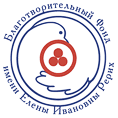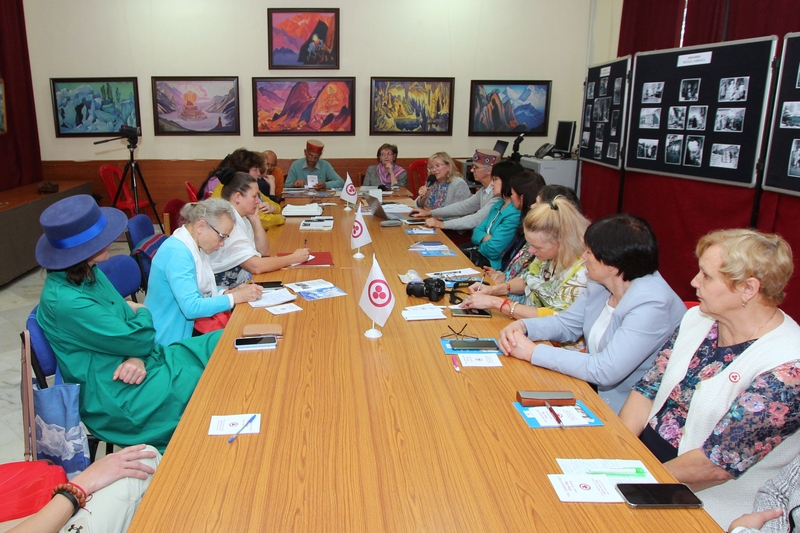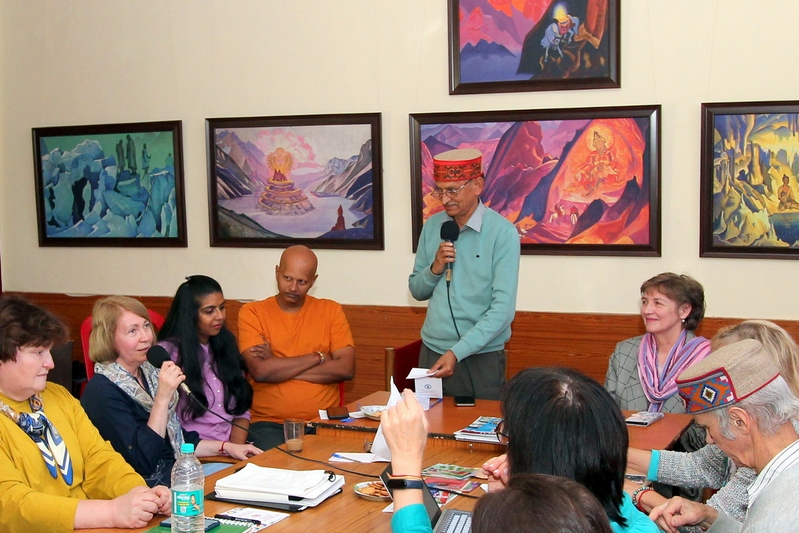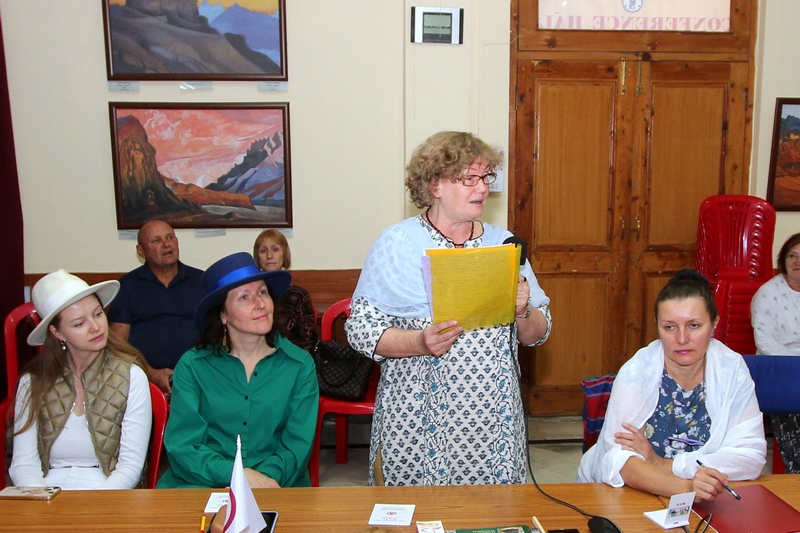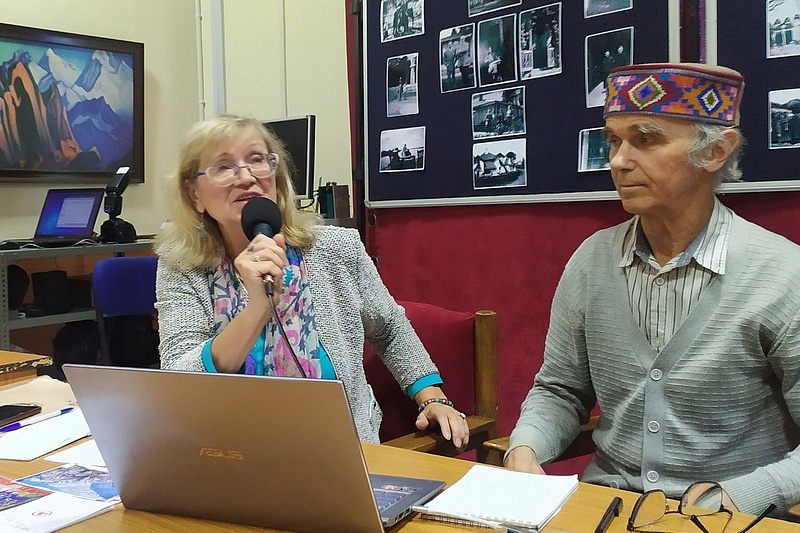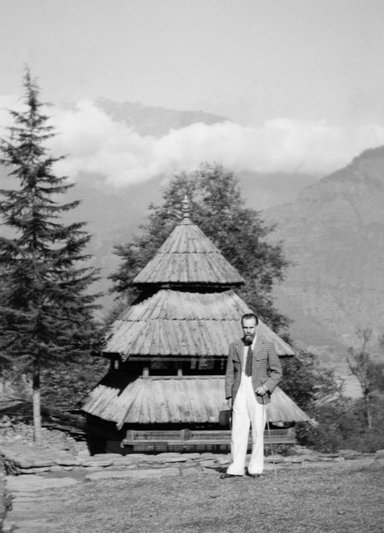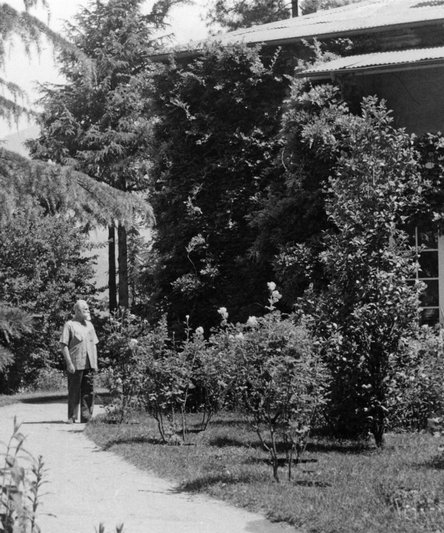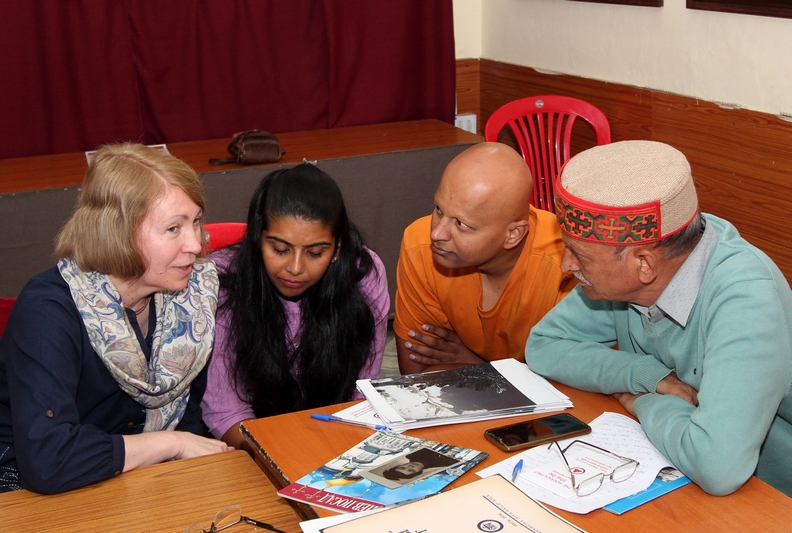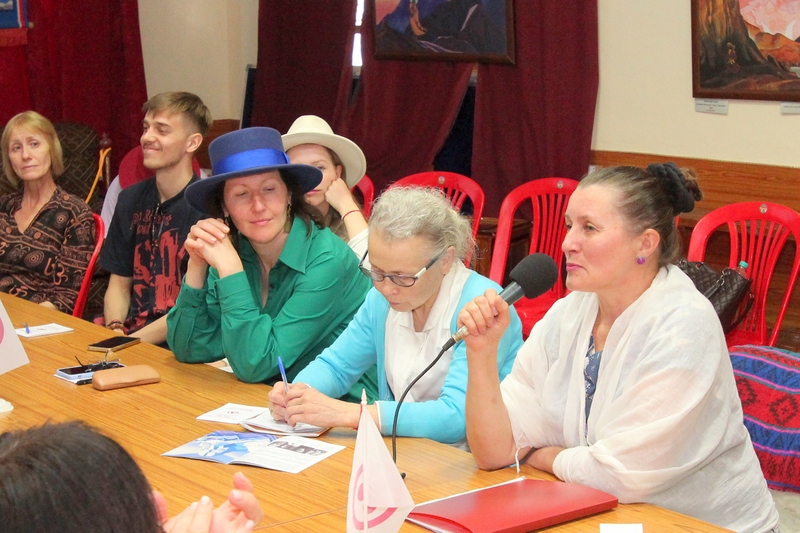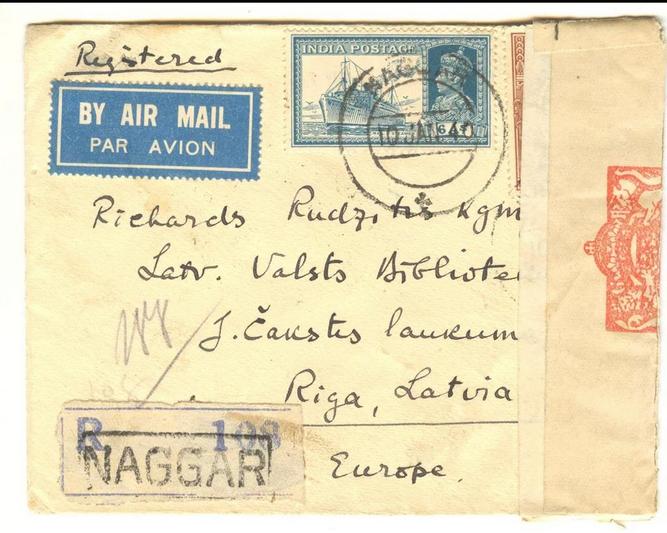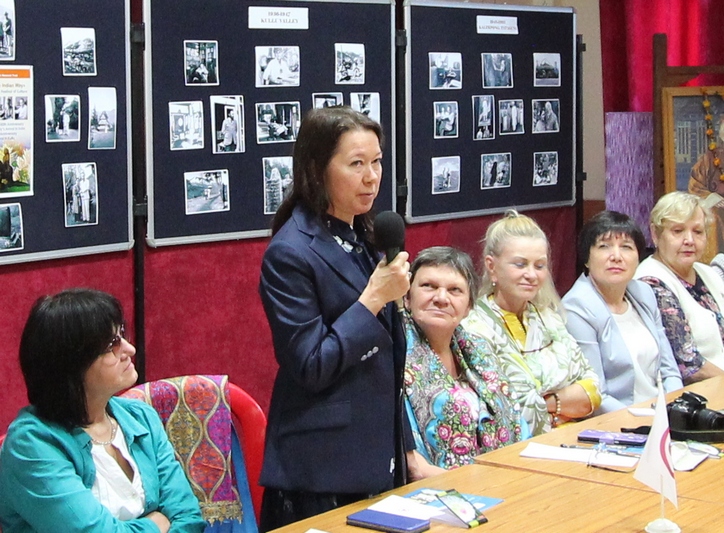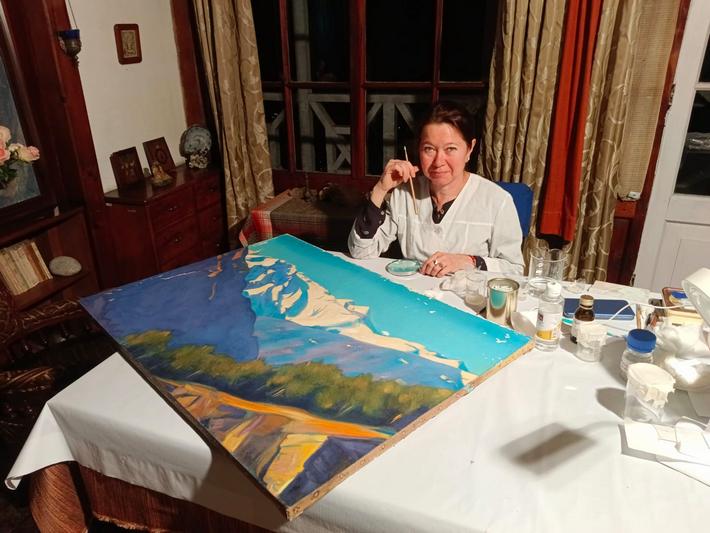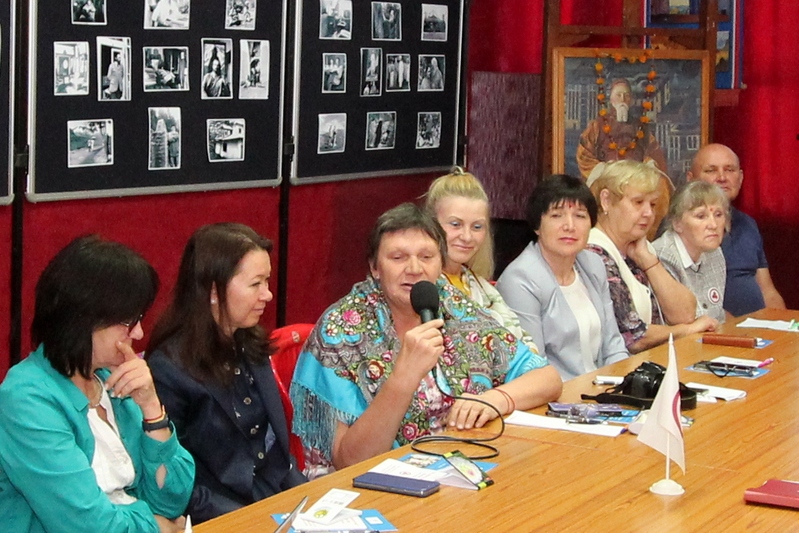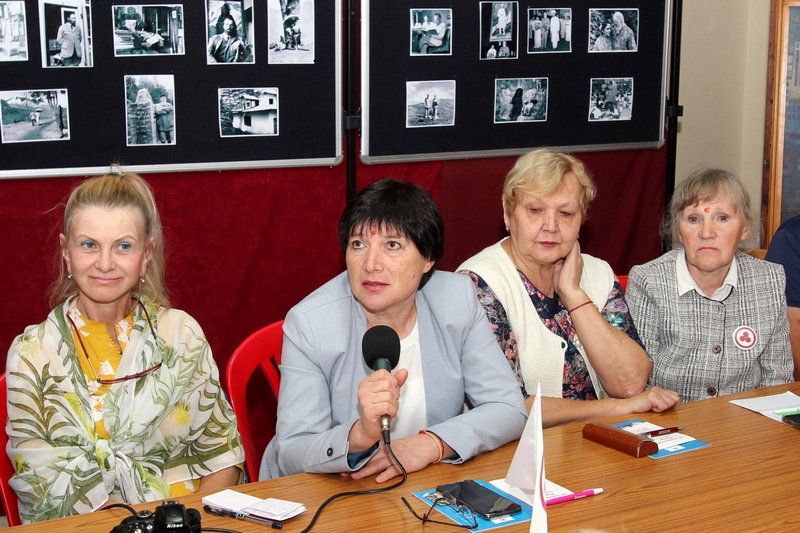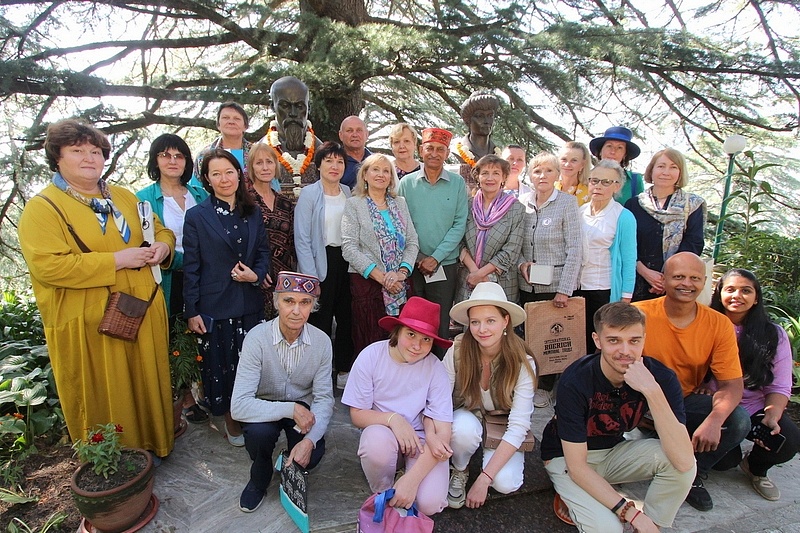The Round Table “Roerichs: the Indian Way” at the IRMT
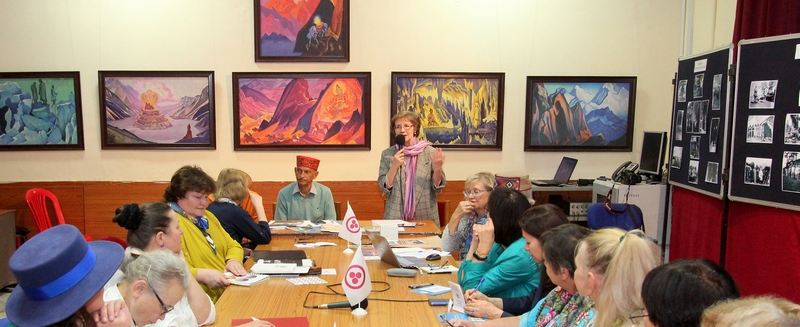
|
On the birthday of the great Russian artist, scientist and thinker Nicholas Roerich, the International Roerich Memorial Trust held a Round table dedicated to the Roerich family’s stay in India. The Round table was attended by the volunteers of the International Centre of the Roerichs (ICR, Moscow), the members of the creative Family Club “Semitsvetik” (Troitsk, Russia), Indian and Russian guests. Elena Ivanko, a translator of Sufi poetry (Russia – Vrindavan, India), took on the role of translator. The Round table was held in the Conference Hall of the IRMT, where the previous day, on October 8, an exhibition of archival photographs related to various periods of the Roerichs’ life in India had been opened.
The Indian Curator of the IRMT Suresh Kumar and the Russian Curator Larisa Surgina, working in the IRMT on the direction from the ICR, Moscow noted that the Kullu Valley was the main place of the Roerichs’ stay in India. About twenty years of their life, filled with creative and spiritual work, passed here. After Nicholas Roerich passed away and the family left the valley, the mission to preserve the Roerichs’ heritage in Kullu was undertaken by Svetoslav Roerich and Devika Rani, his wife, who had been planning to establish the Nicholas Roerich Memorial Museum here since the 1950s. The IRMT was established in 1992-1993, and today it has truly become a centre of art and knowledge, a focus of Indo-Russian friendship and cooperation.
Mrs Tamara Merges, the head of the volunteer group of the ICR, the coordinator of the International Children and Youth Festival “Russia – India: from Heart to Heart”, made a presentation “The Himalayan Kullu Valley in the life and work of Svetoslav Roerich”. Having come to the Himalayas for the first time in 1931, Svetoslav immediately joined the hard work rhythm of the Roerich family life: he headed the various streams of work of the Department of Natural Sciences at the Urusvati Institute, conducted research on the history of art and culture of the Asia peoples, participated in the establishment of international relations of the Institute, in the promotion of the Roerich Pact, and was also engaged in the study of the Kullu Valley, which he later called the cradle of ancient culture.
At the same time, he never left painting. On Svetoslav Roerich’s easels (he developed the skill of working on several paintings simultaneously) one canvas was replaced by another without delay. His studio was located in a corner room of the first floor of the House, and from its windows one could see the bright greenery of the Kullu Valley and snow-white peaks of the Himalayan range. The beautiful world of the Kullu Valley forever captivated him with the richness and colourfulness of its unique life.
Elena Yakovleva, an artist from Russia, told the audience about some facets of the amazing life of the Kullu Valley. She was impressed by the birthday celebration of the goddess Tripura Sundari in Naggar, which the villagers call simply “Mela” – that is, a festival, a fair. It usually begins on the 18th of May. Processions of invited gods come to the Tripura Sundari temple, flowers are offered to the goddess, songs, dances and round dances are organised. “When you immerse yourself in these rhythms of music and dance,” the speaker notes, “and see these painted costumes, the scenery for the of ballet “The Sacred Spring” made by Nicholas Roerich appear before your eyes. And one realises that the images captured by Nicholas Roerich in his sketches more than a hundred years ago in Russia can still be seen today in the Indian Kullu Valley – and not only ancient dances, but also a mighty tree, a sacred stone and a mountainous terrain...”
Natalia Kolodina from the town of Sergiev Posad, Moscow region, told the story that she once saw a photograph from 1960 of George and Svetoslav Roerichs standing with Devika Rani in front of the Cathedral of the Trinity-Sergius Lavra in Sergiev Posad. This photograph echoed in her heart, connecting Russia and India, the Roerich family and St Sergius of Radonezh. Everyday unceasing work and prayer were central to the life of Saint Sergius. The principle of community, good neighbourhood and friendliness, characteristic of him, still unite people today and make their souls purer. This is how we come closer to God, for God is one, but the roads that lead to Him are different.
Svetlana Ashikova, head of the Family Club “Semitsvetik”, spoke about the correspondence of Nicholas and Helena Roerich with the Latvian Roerich Society. The foundations of the Society’s activity were laid back in the 1920s. It was officially registered in 1930. While living in India, the Roerichs closely cooperated with the Latvian Society, inspiring it to active publishing activities and the struggle for signing the Roerich Pact. During correspondence the first pages of the Teaching of the Living Ethics were sent to Latvia from India.
In the second part of her speech, Svetlana Ashikova spoke about the evolution of human colour perception, noting that only humans have the ability to expand the colour-tonal scale of perceived shades. The pinnacle of high colour rendition were the paintings by Nicholas and Svetoslav Roerich. In their works of the Indian period of life the richness and purity of colour in its highest manifestation is most vividly represented. Looking at these canvases, each person is already improving his perception. Developing colour sensitivity and subtlety of colour perception, we are approaching to the disclosure of the hidden knowledge of the Universe.
Ilmira Faridonova, artist-restorer of the first category, Head of the restoration workshop of the Bashkir State Art Museum named after M.V.Nesterov, told the audience about the restoration of the painting “Mount M (Double Gephang peak)” by Svetoslav Roerich from the IRMT collection. Ilmira came to the IRMT for the first time in 2017 at the direction of the International Centre of the Roerichs (Moscow) and is currently continuing her work on the restoration of the painting. She particularly noted that Svetoslav Roerich liked to experiment with various modern innovations in search of the best material. Thus, in one of his letters to Catherine Campbell he wrote that he had finally found the best solution – oil tempera. It seems that it was oil tempera that the artist used in his painting “Mount M” along with water-soluble colours. The restorer plans to carry out the necessary research.
Volunteers of the International Centre of the Roerichs (Moscow), who have become an integral part of the life of the International Roerich Memorial Trust (India) in recent years, gave vivid and emotional speeches. “All of us, volunteers, are very happy to be in the Roerichs’ estate, to see the same landscapes admired by the Roerichs’ family, to walk along the same paths, feeling their Supreme Presence here in Naggar,” Vera Nemtsova (Karelia, Russia) said. “We are doing various jobs at the IRMT, trying to contribute to the preservation of the Roerichs’ heritage in India, realising the international significance of the Roerichs’ Estate in Naggar.”
The importance of the work done by the Roerich family in India was emphasised by V.M.Fedotova (Karelia, Russia). The Roerichs came to India following the call of this country and implementing many cultural projects here, thus fulfilling the promise of the Spiritual Teachers.
Tatiana Galkevich, Chairman of the Borisov Roerich public association “Culture and Knowledge” (Belarus) noted: “Despite the fact that a hundred years have passed since the Roerichs came to India, the estate and the house have been carefully preserved by the Indians. We express our gratitude for this to the Indian side <...> The ICR in Moscow and the IRMT in Naggar are two foundations of friendship and close cooperation, and we will be glad to continue our partnership.”
Thus, the Indian way of the Roerich family, which began 100 years ago, in late 1923, continues today. The active cultural activities of the International Roerich Memorial Trust in Naggar are clear evidence to this.

